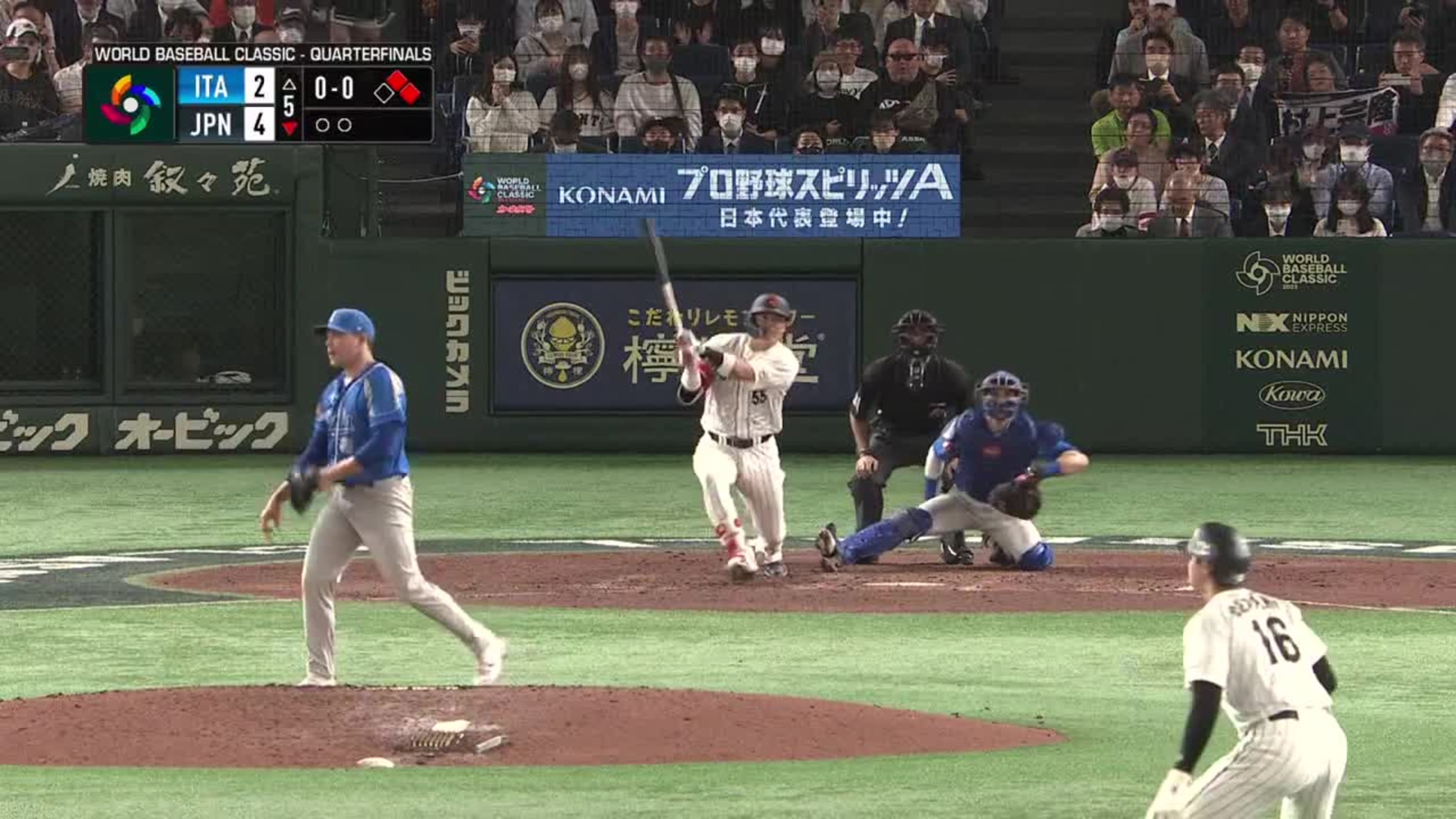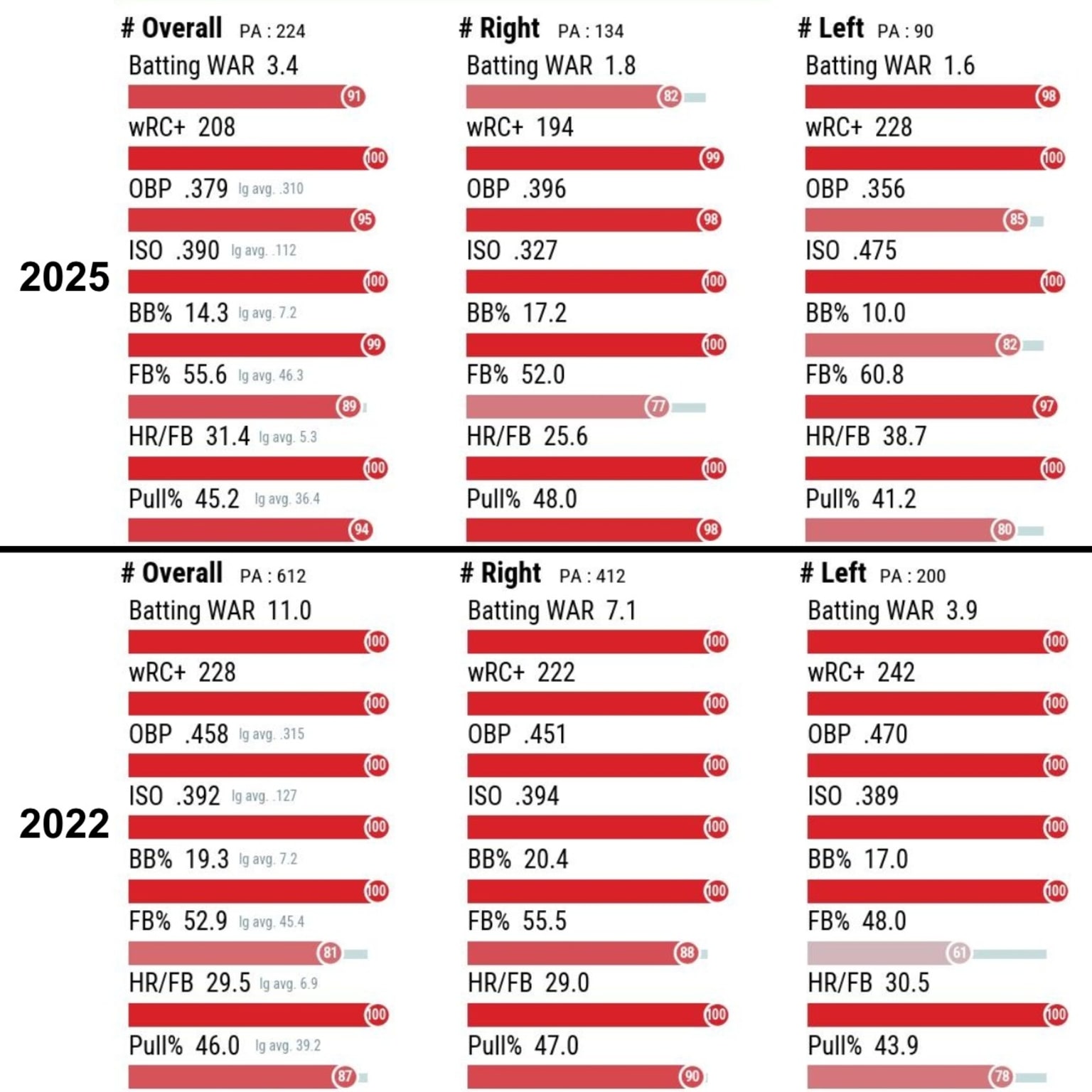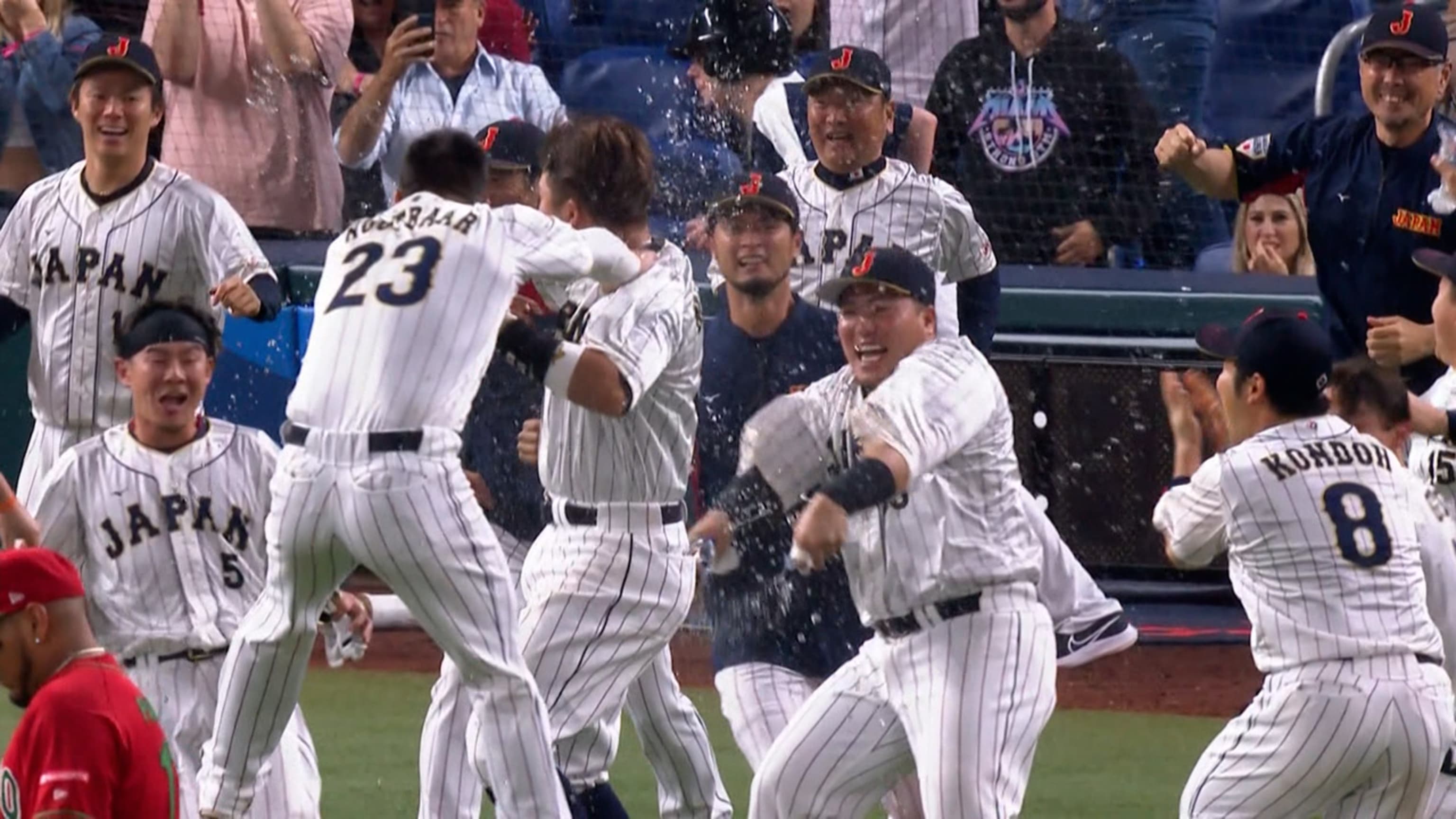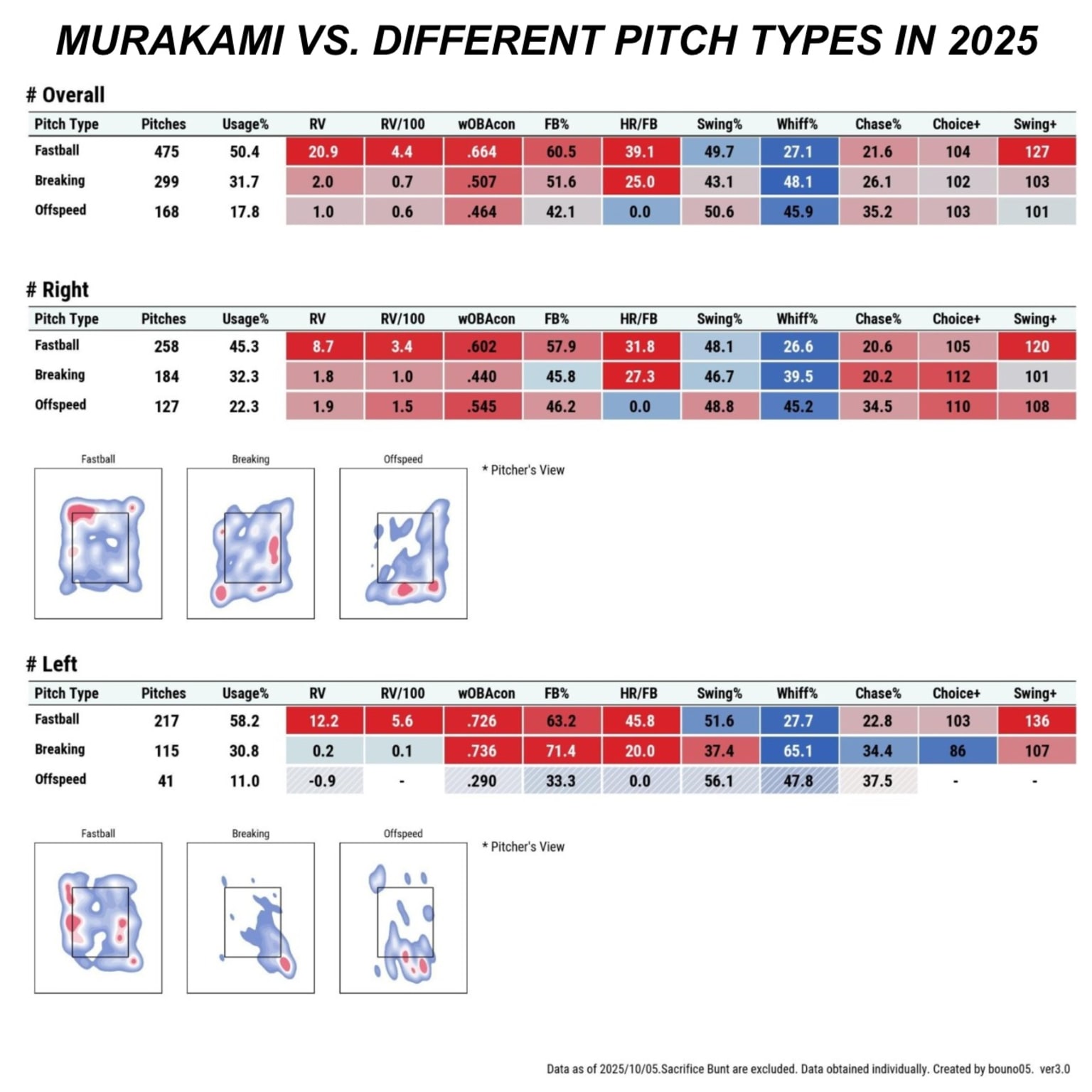
Here's why a Japanese slugger is one of the most intriguing free agents
November 7th, 2025
A year ago, when the news first broke that Munetaka Murakami was likely headed to the Major Leagues in 2026, the Japanese slugger was one of the great enigmas of the baseball world.
Murakami had Ruthian power … and Joey Gallo-esque strikeout problems. He had superstar upside, and one of the greatest hitting seasons in history under his belt -- Murakami's 2022 season in Nippon Professional Baseball, when he hit 56 home runs and won a batting Triple Crown. But he was striking out more and more, and even though he kept crushing homers, he hadn't replicated the all-around hitting success of that historic season in the two seasons after.
Fast-forward a year. Murakami is coming. The 25-year-old lefty slugger will be posted by his NPB club, the Tokyo Yakult Swallows, on Friday. And Murakami is still the same enigma. Projecting the type of hitter he'll be in the Majors is anything but easy -- but the high end of those projections is tantalizing.
Here's what makes Murakami so exciting as the next potential international MLB star -- and the big question he'll have to answer if that's what he's going to become.
First things first: Murakami's power is still enormous.
Murakami was limited to just 56 games in 2025 due to an oblique injury, but he provided plenty of big swings after he came back.
Once Murakami got back in the Swallows lineup, he went on a tear. He hit 22 home runs in his 56 games, which is an even higher home run pace than his 56 homers in 141 games in 2022.
Murakami finished in the top five in NPB in homers … despite barely playing a third of the games as the only hitters in front of him on the leaderboard. So he's still got the pop.
In 2025, Murakami was more than twice as good as the average NPB hitter, with a 208 wRC+ that was reminiscent of his 2022 season. He once again excelled at crushing fly balls and has tons of pull power, which is how plenty of MLB sluggers, like Cal Raleigh and Kyle Schwarber, get their home runs. Murakami is a highly feared hitter, whose prodigious power also helps him draw tons of walks.

And that respect from pitchers is deserved. Like some of those big lefty sluggers in the Majors, Murakami can reach the upper echelons of exit velocity. He definitely stacks up with the hardest hitters in MLB.
Murakami's max exit velocity during the 2025 season was 116.5 mph, according to NPB tracking data newly provided in the league's NPB+ app. That's harder than most MLB sluggers ever hit the ball.
NPB 2025 max exit velocities of notable players (via NPB+)
Richard Sunagawa: 119.2 mph
Seiya Hosokawa: 117.0
Munetaka Murakami: 116.5
Teruaki Sato: 116.0
Chusei Mannami: 114.3
Kenta Bright: 114.3
Shugo Maki: 114.0
Kazuma Okamoto: 112.2
Shota Morishita: 111.6
Murakami's swing-and-miss and K numbers by season
Per DeltaGraphs
2022: 31.7% whiff rate, 20.9% strikeout rate
2023: 34.3% whiff rate, 28.1% strikeout rate
2024: 37.3% whiff rate, 29.5% strikeout rate
2025: 36.7% whiff rate, 28.6% strikeout rate
Such a high swing-and-miss rate and strikeout rate in Japan is not good -- when NPB sluggers come to MLB, their contact numbers already tend to get worse. And Murakami's whiff rate and K% would have both been among the highest in MLB in 2025.
As Yuri Karasawa noted in a thorough breakdown of Murakami over at JapanBall, Murakami's contact rate on pitches in the strike zone in 2025 was just 72.6%, down from 77.1% in 2022. In MLB, the average in-zone contact rate is 82.5%.ow high his ceiling is as a power hitter. The harder you can hit the ball, the better your outcomes can be as a batter.
Hitting the ball extremely hard is a skill. Hitting the ball as Murakami can is a rare skill.
In 2025, only 23 MLB hitters hit even one ball 116 mph or harder. And only nine left-handed hitters did it, a list headlined by Oneil Cruz, James Wood, Schwarber, Elly De La Cruz and, of course, Shohei Ohtani.
Murakami's 116.5 mph max exit velo this season is also in line with the numbers we saw from him during the 2023 World Baseball Classic, when he played in front of Statcast tracking systems.

His hardest-hit ball tracked in the tournament was a 115.1 mph home run off Merrill Kelly in Japan's win over the U.S. in the championship game. This year in MLB, only 19 players hit a home run 115 mph or harder. The nine of those who are lefties include Ohtani, Cruz, Schwarber, Wood, De La Cruz and Juan Soto.
Murakami looks like he could also have the high bat speeds to produce those hard-hit balls regularly. Also per the NPB+ app, his max bat speed in 2025 was 85.7 mph. For reference, Statcast's "fast swing" threshold for bat speed is 75-plus mph, and the only MLB hitter who averages a bat speed of 80-plus mph is Giancarlo Stanton.
NPB 2025 max bat speed of notable players (via NPB+)
Shota Morishita 88.0 mph
Seiya Watanabe 88.0
Teruaki Sato: 87.7
Seiya Hosokawa: 87.4
Kenta Bright: 87.4
Chusei Mannami: 86.6
Munetaka Murakami: 85.7
Shugo Maki: 85.5
Richard Sunagawa: 85.1
Kazuma Okamoto: 84.2
Now, there's not much real insight to be gained just from Murakami's highest individual swing speed, as plenty of hitters can generate those high bat speeds by taking an all-out hack once in a while. It's more just a teaser. We don't have an average bat speed number for Murakami yet. But we can hope that given Murakami's exit velocity and power production that results from his swings, he will have the bat speed to match.
But the big question: Can Murakami get his K's down?
If Murakami were jumping to the Major Leagues after his 2022 season, this wouldn't be so urgent a question. While his strikeout numbers were still relatively high for NPB -- a lower-strikeout league than MLB -- they were a lot lower than they are now.
Murakami's K's have ballooned in the three seasons since his record-setting year. That resulted in a dip in production at the plate in 2023 and '24 (Murakami was still very good as a hitter, just not historically good), and even stayed true in 2025, when his offensive numbers rebounded.
Those underlying numbers -- high swing-and-miss, high strikeouts, low contact -- are the No. 1 concern with Murakami as an MLB hitter.
Murakami's swing-and-miss and K numbers by season
Per DeltaGraphs
2022: 31.7% whiff rate, 20.9% strikeout rate
2023: 34.3% whiff rate, 28.1% strikeout rate
2024: 37.3% whiff rate, 29.5% strikeout rate
2025: 36.7% whiff rate, 28.6% strikeout rate
Such a high swing-and-miss rate and strikeout rate in Japan is not good -- when NPB sluggers come to MLB, their contact numbers already tend to get worse. And Murakami's whiff rate and K% would have both been among the highest in MLB in 2025.
As Yuri Karasawa noted in a thorough breakdown of Murakami over at JapanBall, Murakami's contact rate on pitches in the strike zone in 2025 was just 72.6%, down from 77.1% in 2022. In MLB, the average in-zone contact rate is 82.5%.
In the Major Leagues, even elite high-power, high-strikeout sluggers like Aaron Judge, Ohtani and Schwarber will keep their in-zone contact rates above 75%. Only a few star sluggers like Rafael Devers and Nick Kurtz dipped below that threshold in 2025. And again, the NPB-to-MLB move has a tendency to bring those contact rates down.
Other Japanese sluggers like Seiya Suzuki have had much higher contact rates when they came to MLB. But Karasawa did note one interesting comparison who was more in line with Murakami: a young Ohtani, who had similar high hard-hit rates and contact metrics to Murakami when he joined the Angels in the 2017-18 offseason at age 22.
But there's risk for Murakami. High velocity, as well as secondary pitches -- especially breaking pitches from left-handed pitchers and offspeed pitches from right-handed pitchers -- posed problems for Murakami. Again, that doesn't bode particularly well for batting in MLB, where high-velocity fastballs are more prevalent and wipeout breaking and offspeed pitches are heavily used.
This season, Murakami swung at missed at nearly half of the offspeed pitches he swung at vs. righties, and nearly two thirds of the breaking pitches he swung at vs. lefties, per data from the handy NPB Batter Profile app. He'll have to work on making more contact against those secondary pitches in MLB.

So Murakami's No. 1 goal when he arrives in MLB will have to be improving his contact ability while maintaining his elite power.
If he does that, he will be a star slugger in the Majors. His bat is just that dangerous.
As others have noted, Murakami could be a Matt Olson type, or a Devers, or a Wood or Riley Greene -- players for whom the strikeouts-for-home-run-power tradeoff is worth it in a big way.
<